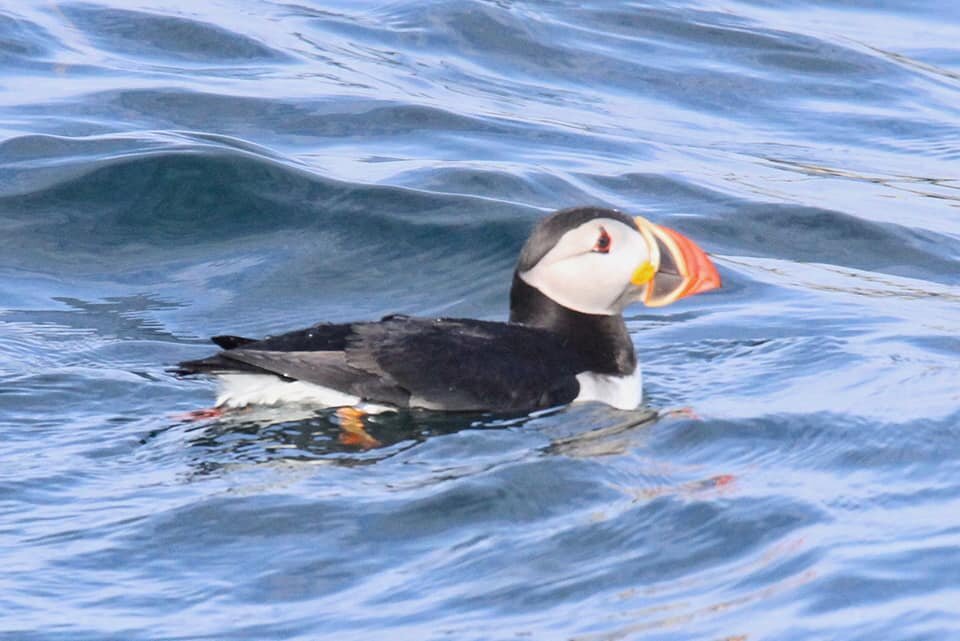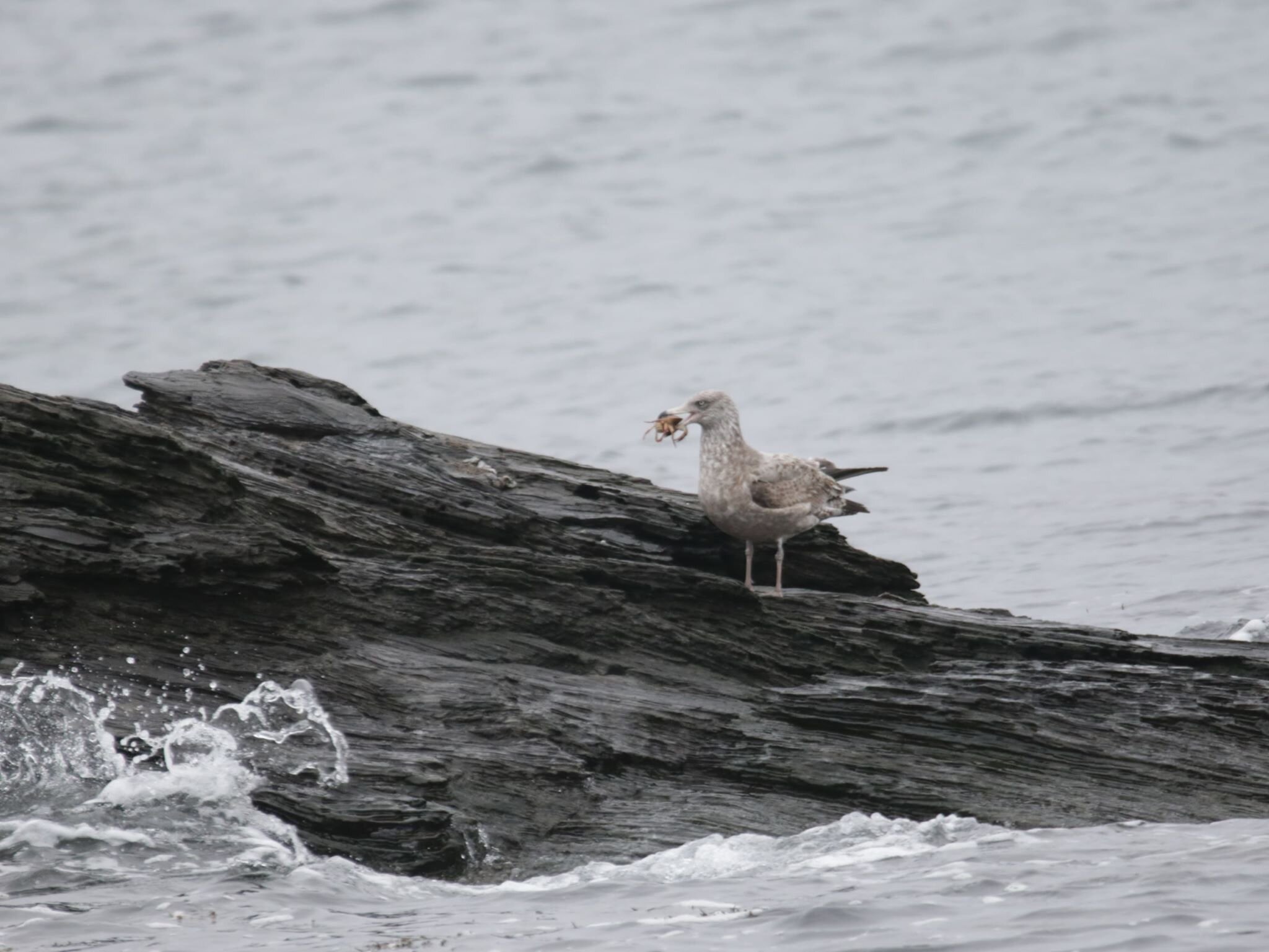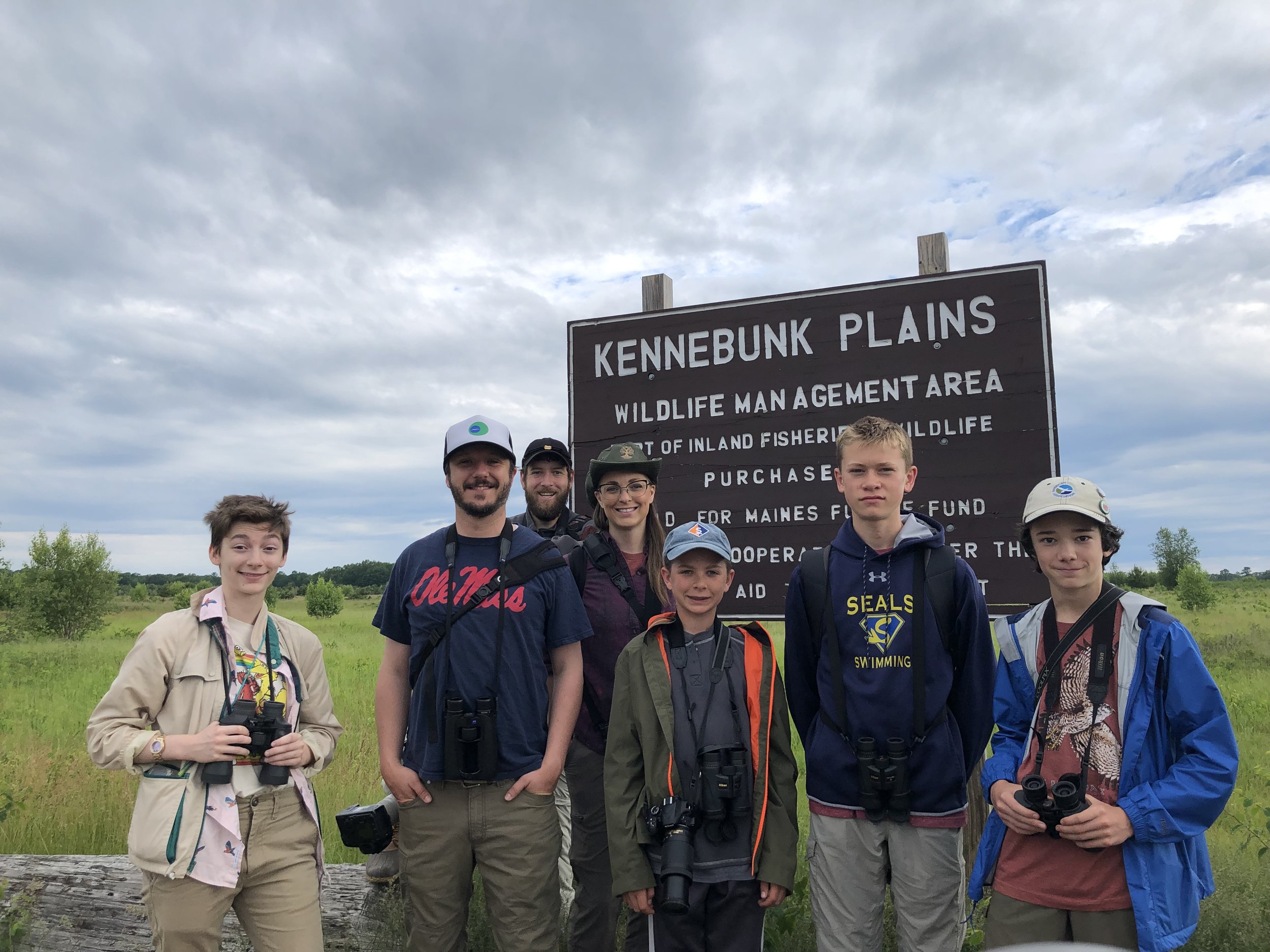by Marion Sprague
On Dec. 28th MYBC set out on our 2nd Annual Christmas Bird Count for the Biddeford/Kennebunk CBC! Our crew consisted of 12 birders—7 young birders and 5 adults. We had mild sunny weather all day making for very comfortable birding. We had a great time and several young birders made the long-haul staying out birding from 7 am all the way to the final compilation which took place at 5 pm. This was our second year with special guest Nathan Hall, one of the MYBC founders, leading the team We covered the same territory though included a few new locations in the Biddeford/Saco area.
Our first stop was in Saco at Oceanwood Camp for the sunrise over the marsh. We were greeted by a chorus of Canada Geese and Mallards, as well as a few Eastern Bluebirds and a lone Belted Kingfisher.
We made a stop to walk the Middle Goosefare Trail to pick up Golden-crowned Kinglet, but got sidetracked a group of crows mobbing something—excited it could be a raptor or owl we took off in hot pursuit. We never did find out what the racket was all about. On our jaunt through the neighborhood we were serenaded by a Tufted Titmouse tuning up a rather unique song that caused a number of us to questions what we were hearing. Luckily the little signer posed and began to sing on an open branch, We also a small flock of Mallards, a mixed- flock of sparrows and finches and the call of a Red-bellied Woodpecker. Once we made it back to the trail, we did get our Golden-crowned Kinglets, a mixed flock of Black-capped Chickadees, Tufted Titmice (mices? mouses? meese?), nuthatches and a Downy Woodpecker.
Our next stop brought us to Old Orchard Beach to pick up some sea birds. We were pretty successful, with highlights including a Red-throated Loon, grebes, scoters, Long-tailed Ducks, and 2 Greater Scaup. The two highlights for the group were a 3 late-season Tree Swallows that flew right over our heads and a flock of 30+ Sandlerings!
We broke for lunch and picked up a few more birders for the afternoon. After we filled out bellies, we decided to hit up Old Orchard Blueberry Barrens. It was pretty quiet along the trail. We encountered a total of 4 species—Morning Doves, American Crows, Black-Capped Chickadees and White-breasted Nuthatch. We entertained ourselves with discussion of the importance of places such as this barren to native wildlife and plants.
Our journey next brought us to Saco Heath. While wonderful habitat, birding was incredibly slow. While we didn’t pick up any new species, the warm afternoon was perfect for a walk along the boardwalk. The heath has all the ingredients to be a great destination. This is our second year on the CBC with slow results. After some discussion, we may try to hit the heath earlier in the day next year to see if it is just a slow winter-afternoon spot.
Our final stop before heading to the compilation was a small apple orchard in Saco. Here we were greeted by a few Northern Cardinals. The light was starting to wain and we said goodbye to another great year participating in the Biddeford CBC.
Several young birders attended the compilation and were active participants in the count process—even stepping in to read the compilation list for a team that was not able to attend. This was a special year for the Biddeford CBC as it celebrated its 60th year (the CBC celebrated its 120th anniversary this year). Dave Doubleday, who has participated in every one of the 60 CBC’s, gave a few remarks about the counts over the years.
In total (now that the official results are in) there were 84 different species seen on the count day. MYBC had a lot of fun and can’t wait to participate next year!
Stay-tuned for the January 2020 Trip Announcement coming soon!
See Full Checklists here:
Oceanwood Camp https://ebird.org/checklist/S62749793?share=true
Free Street, Old Orchard https://ebird.org/checklist/S62749796?share=true
Temple Ave, Old Orchard https://ebird.org/checklist/S62749787?share=true
Old Orchard Beach https://ebird.org/checklist/S62749779?share=true
Dirigo Road, Old Orchard https://ebird.org/checklist/S62749764?share=true
Middle Goosefare Trail https://ebird.org/checklist/S62749746?share=true
Old Orchard Blueberry Barrens https://ebird.org/checklist/S62749726?share=true
Saco Heath https://ebird.org/checklist/S62749708?share=true



















































































































